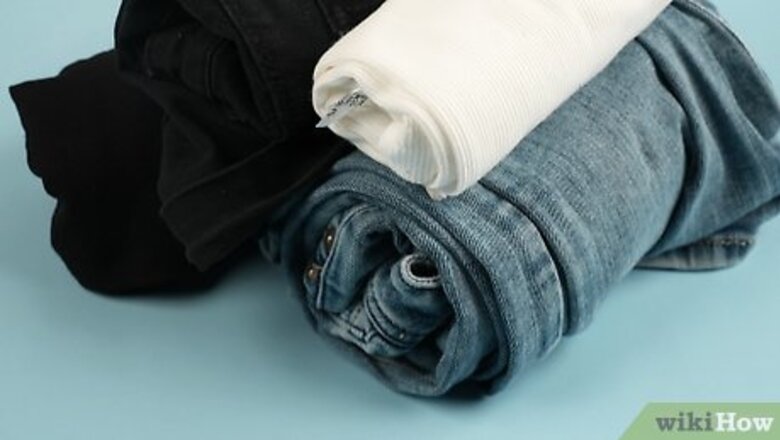
views
- Roll your clothes instead of folding them to reduce wrinkles and save space. When you reach your destination, hang the clothes to prevent wrinkles.
- Bundle your clothes by first filling a small pouch with socks. Spread your clothes out flat, put the pouch in the middle, and wrap items around it to form a large bundle.
- Wear your heaviest shoes, and pack other heavy pairs at the bottom of your suitcase. Place shoes in bags to keep them separate from your clothes.
Rolling Clothes
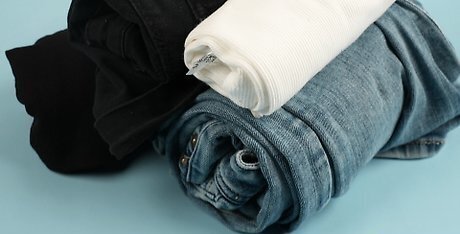
Roll casual clothes and synthetic fabrics to avoid wrinkles and save space. Use this method for casual clothing like T-shirts, shorts, underwear, and socks, as well as denim, knits, and synthetic fabrics like spandex. Rolling is especially good for packing duffel bags or backpacks, since it’s easier to squeeze rolled items into small nooks and crannies in these types of bags. Rolling isn’t recommended for items made from natural fabrics, like cotton or silk, since they’re likely to wrinkle. Some prefer to vacuum pack their rolled clothes to save even more space. However, this produces bad wrinkles. Store delicate items like lingerie and stockings in mesh laundry bags. That way, an airport inspector can see inside the mesh bag without handling these items. Place rolled pajamas and a few pairs of underwear in an accessible spot, like the top of your bag, so you can access them easily when you get to your destination.
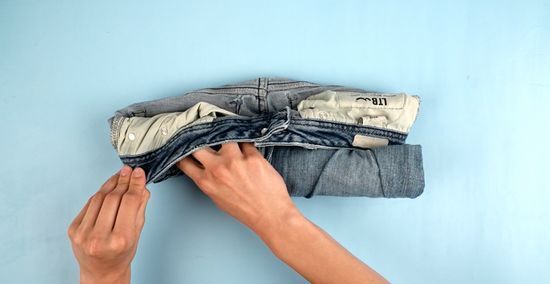
Rolling pants and jeans: Lay your pants on a flat surface, and zip and button them up. Turn the top 4 inches (10 cm) of the pants inside out to make a cuff. Fold each pant leg in half inward, leaving a small gap where the zipper is. Roll the pants tightly from the bottom upward. Wrap the cuff around the roll to keep it from unrolling. Use this method to roll dress pants as well.
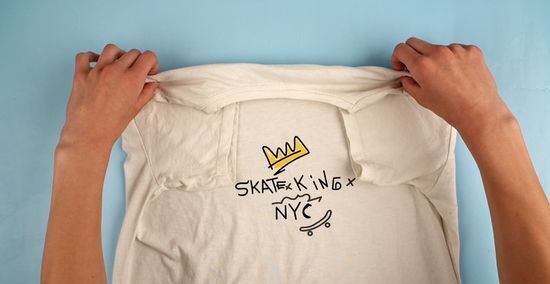
Rolling T-shirts and blouses: Lay your garment face-up on a flat surface. Fold the bottom 3 inches (7.5 cm) of the garment inside out to create a “cuff.” Fold the sleeves in, then roll the garment tightly from top to bottom until you reach the cuff you made. Pull the cuff over and around the roll to keep it from unraveling. As you roll, press and slide your hands across the fabric to smooth out any wrinkles. Place your rolled T-shirts together in a plastic zip bag. This makes them easier to find when you’re unpacking and prevents them from getting mixed up with other clothing items.

Rolling long-sleeve shirts: Lay your shirt face-up and cross the sleeves over the front in an “X” pattern. Turn the bottom 3 inches (7.5) cm of the shirt inside out to create a cuff. Fold the shirt in thirds by folding the right side inward, followed by the left. Spin your shirt upside down and roll it tightly from the collar to the end of the shirt. Wrap the cuff around the roll to keep it from unrolling. Button up dress shirts before rolling them, including collar and cuff buttons.
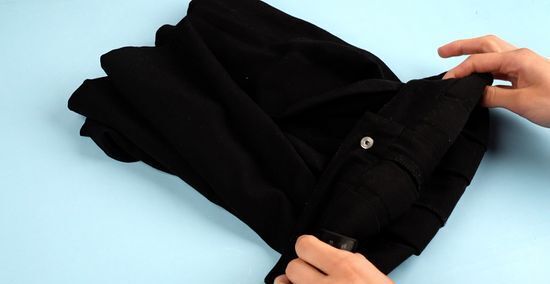
Rolling skirts: Lay your skirt upside down on a flat surface so that the waist is closest to you. Turn 3 inches (7.5 cm) of the waist fabric inside out to create a cuff. Fold the skirt into thirds by folding the right side inward, then the left. Roll upward from the waist of the skirt to the bottom, wrapping the cuff around the rolled skirt so that it doesn’t unravel. Rolling works best for skirts made with synthetic fabrics like nylon or polyester, since these are wrinkle-resistant.
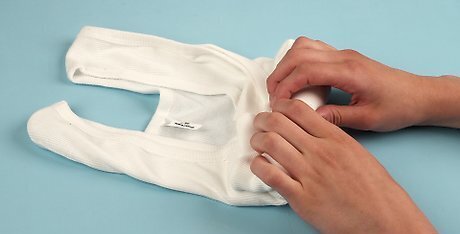
Rolling dresses: Lay your dress on a large flat surface. Fold the dress in half from the bottom upward so that the hem of the dress is just below the neckline. Your folded dress will look like a large shirt. Fold the bottom 3 inches (7 cm) up and behind the rest of the “shirt” shape. Fold the dress in thirds by folding the right side inward, then the left. Tightly roll the fabric from the top downward. Fold your dress in thirds so that it looks like a narrow strip of fabric, then roll it up. If you have an extra fold of fabric at the end of the roll, you can wrap this fabric around the roll to keep everything in place.
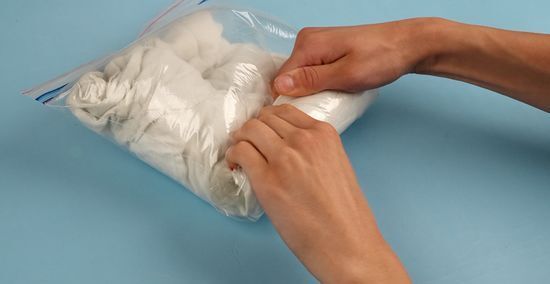
Rolling wrinkle-prone items: Pack garments made from 100% cotton, silk, or linen in plastic dry-cleaning bags. Place your garment in the bag and lay it on a flat surface. Then fold and roll the garment like you normally would for that garment type. The plastic dry-cleaning bag will cushion and minimize wrinkles. For instance, to roll a silk blouse, place the blouse in a plastic drycleaning bag and lay it on a flat surface. Fold the sleeves inward and gently roll the blouse from top to bottom. Fold and roll the plastic as if it were part of the item. Roll these items gently to avoid wrinkling. Some wrinkling may still be noticeable when you unpack.
Wrapping Clothes in a Bundle
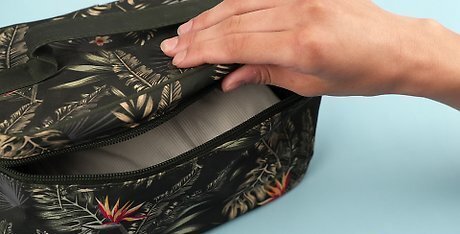
Fill an 8-inch (20cm) pouch with soft items like socks, and set it aside. Choose a pouch that’s roughly pillow-shaped. This will form the “core” of your bundle of clothes, with all your shirts, pants, blouses, and other items wrapped around it. Once you fill the pouch, set it aside temporarily. You can also fill the pouch with underwear or swimsuits. If you don’t have a pouch, fold a towel or small blanket into an 8-inch (20 cm) wide pillow shape.
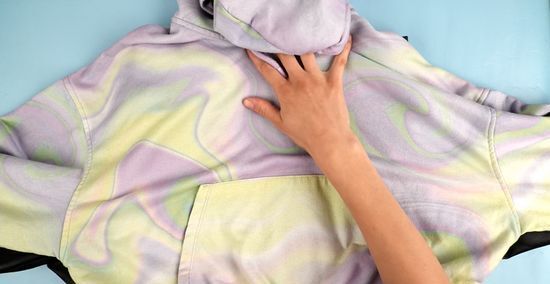
Layer your heaviest jackets and long-sleeve tops on a flat surface. First, position your heaviest jacket or shirt face-down and upside down from your perspective, with arms pointed outward. Layer another jacket or long-sleeve top 180 degrees to the first item, lying face-up and right side up from your perspective so that its arms overlap with the arms of the item beneath it. Make sure that only the upper third of the items overlap. Repeat this process for other jackets and tops, alternating each layer’s orientation. Start with the heaviest items first, like jackets and button-down shirts. Add short-sleeve tops after layering your long-sleeves. Don’t layer T-shirts yet—those will come later.
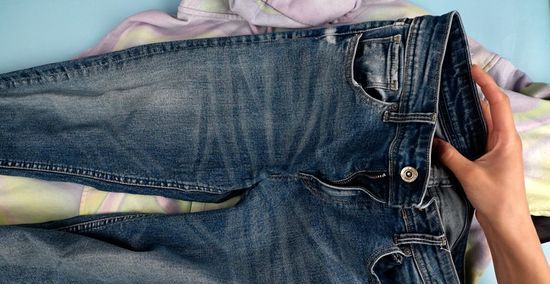
Layer your pants perpendicular to the tops. Arrange the pants so the upper third overlaps with the shirts and the legs extend out over the sleeves. Alternate the direction of the pants (left-facing, right-facing, left-facing, etc.) Start with heavier items like jeans and wool pants, then move on to lightweight items like workout pants. When you finish stacking your pants, the pile will have a “+” shape with the pants in one orientation and the tops at 90 degrees to the pants.
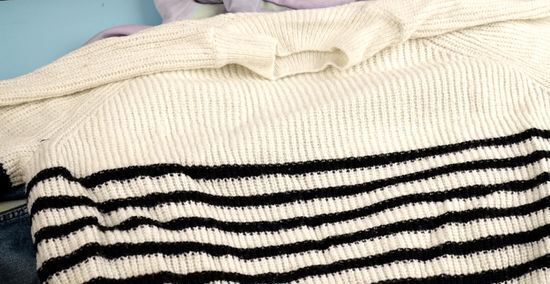
Stack sweaters at 90 degrees to the pants. Place the first sweater right side up from your perspective, aligned with the layer of tops beneath the pants. Then place another sweater upside down at 180 degrees to the first sweater. Keep adding sweaters in an alternating pattern: right side up, upside down, right side up, etc. Make the top third of each sweater overlap with the top third of the sweater below it. Skip this step if you aren’t packing sweaters. Just make sure the next layer is perpendicular to the one below it.
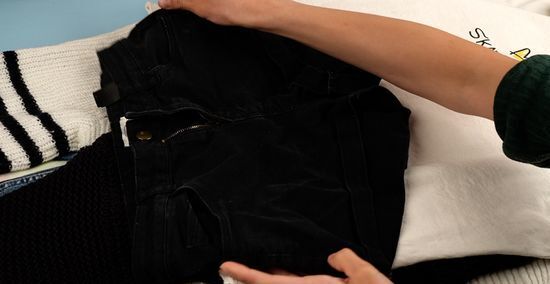
Layer your T-shirts and shorts perpendicular to the sweaters. Start with T-shirts, stacking them in an alternating pattern: left-facing, right-facing, left-facing, etc. Then add shorts to this layer, if you’re bringing any. Make sure the top third of each item overlaps with the top third of the item beneath it. Your stack of clothes may get pretty high at this stage. Layer each item carefully to prevent the pile from falling over.
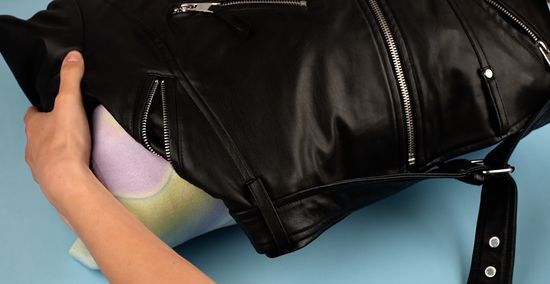
Place the pouch in the middle of the pile and wrap clothes around it. Tightly wrap the uppermost item (a T-shirt or pair of shorts) around the core, turning the core over as needed to make sure each item envelops it completely. Then wrap the next item around the first item. Keep wrapping items one at a time, layer by layer, until you’re left with a large “pillow-shaped” bundle of clothing. Wrap each item tightly as you go. The tighter the wrap, the smaller the bundle will be. For long-sleeved items like shirts and sweaters, fold the sleeves into an “X” pattern over the top of the bundle. The last layer will be your heaviest item, like a jacket or thick hoodie.
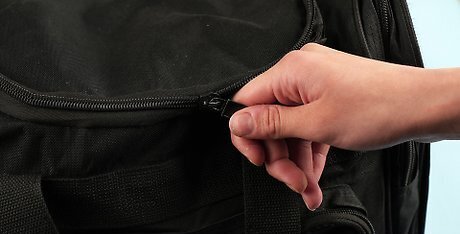
Place your bundle in a bag or suitcase. Use caution when picking up the bundle to prevent clothes from sliding off. If necessary, squeeze the sides of your bundle to help it fit into your suitcase, and press down on the suitcase’s lid when zipping it shut. While bundle packing is very efficient and helps prevent wrinkles, it takes a bit more time to pack. Bundling also makes it harder for your bag to be inspected by airport security. If your bag is opened for inspection, your bundle may get undone.
Hang up your clothes when you reach your destination to minimize wrinkles. Leaving your items in your suitcase will cause wrinkles to worsen. The sooner you hang up your clothes, the better! [Image:Fold Clothes for Travel Step 15 Version 3.jpg|center]] Unpacking your clothes also makes it easier to find specific items while you’re on vacation. No one wants to dig through a suitcase for a single shirt.
Packing Shoes
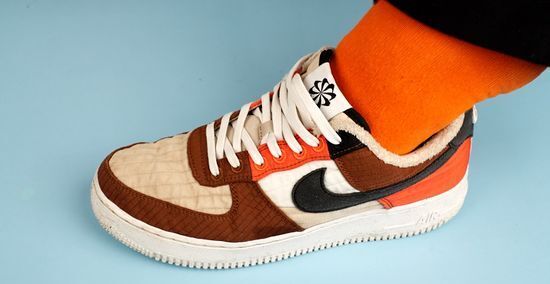
Wear your heaviest shoes instead of packing them. Your heaviest or biggest shoes take up the most room and add unnecessary weight to your luggage. Wear them instead, and just remove them during your flight or road trip. Only pack the shoes you’ll really need for your trip. Bringing too many will make your bag heavy and leave less room for other items. Avoid packing big, heavy shoes unless you know you’ll need them, such as for a hiking trip.
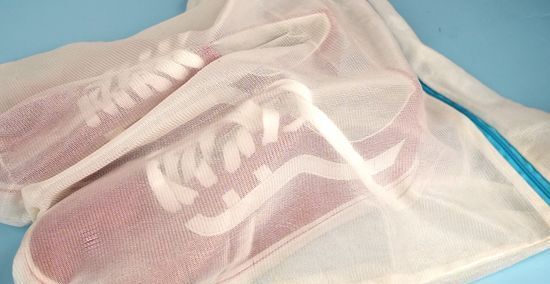
Use shoe bags to protect your clothes. Place shoes in plastic bags or in drawstring bags that you can tie shut. Use plastic or waterproof bags for shoes that could get muddy or wet, like rain boots and hiking shoes. Place each pair of dress shoes or heels in separate bags to prevent them from getting damaged. Then pack shoe bags in your suitcase with your other belongings. Conserve space by packing each pair with their tops facing each other, with one shoe turned 180 degrees so that they fit together like a yin-yang symbol. Avoid packing shoes without bags, especially in the same suitcase as your clothes.
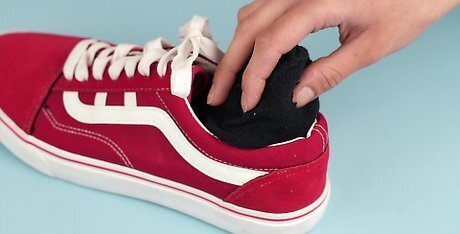
Stuff your shoes with socks to save space in your bag. Add underwear, bathing suits, or similar items if you have room left over. Fill your shoes with dirty items at the end of your trip if you aren’t able to wash your clothes. Avoid doing this with dress shoes, heels, or expensive shoes. Fill these with tissue paper or wood shoe blocks to help maintain their shape.
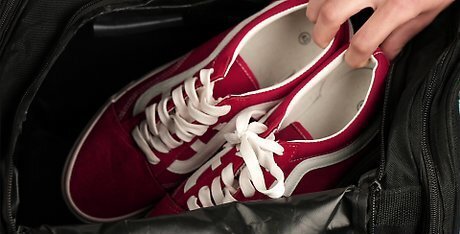
Pack heavier shoes at the bottom of your bag. This will make your bag bottom-heavy and less likely to tip over when you put it down. For rolling suitcases, pack heavier shoes close to the wheels so that your suitcase is easier to pull and turn. If you’re packing a backpack, place heavier items like shoes in the middle of your bag, not the bottom. This keeps your backpack’s center of gravity near your torso, making it easier to carry.




















Comments
0 comment